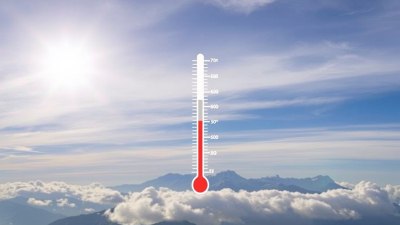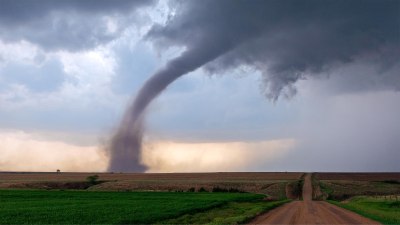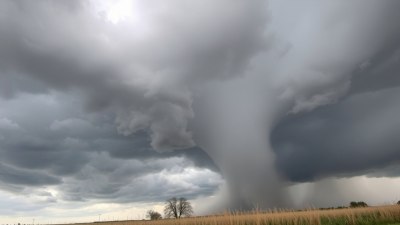How Your Pets React to Shifting Seasons and Why It Changes Your Routine
Explore how seasonal changes affect your pets' behavior and routines, enhancing your understanding of their needs.

Image by damlaozturkk9 on Freepik
As the seasons change, so do the behaviors and moods of our beloved pets. Just like humans, animals can feel the visual and environmental shifts associated with the transition from one season to another. Understanding how your pets react to these changes is not only interesting but also essential for adapting their routines and care to ensure their well-being. The effects of seasonal changes on pets encompass various aspects, including their activity levels, dietary needs, grooming habits, and even their behavior towards other animals and people. In this article, we will explore the different ways in which pets respond to shifting seasons and why it's important to adjust your routine accordingly.
Spring: A Season of Renewal
As winter fades and spring emerges, pets tend to exhibit increased energy and excitement. The warmth of the sun and the blooming of flowers stimulate their senses, prompting them to spend more time outdoors. Dogs, in particular, relish the opportunity to explore parks and engage in outdoor activities as the weather becomes more conducive to play. However, pet owners should be aware of potential challenges such as allergies. Just like humans, pets can suffer from seasonal allergies due to pollen and other allergens in the air. Monitoring your pet's health and taking necessary precautions, such as regular grooming and keeping them indoors during peak pollen times, can help mitigate these issues.
Summer: Fun in the Sun
Summer is often synonymous with outdoor adventures and family gatherings, but it also poses unique challenges for pet owners. The rising temperatures can lead to overheating, especially in breeds with thick fur or flat faces. Pet owners must adapt their routines to ensure hydration and provide shade during outdoor activities. Early morning or late evening walks are ideal to avoid the peak heat of the day. Additionally, summertime can introduce new pests, such as fleas and ticks, which thrive in warmer weather. Implementing preventative measures and regular check-ups with your veterinarian can help protect your pets from these uncomfortable nuisances.
Autumn: Preparations for Change
As autumn approaches, the world begins to change colors, and the air becomes crisp. This transition often prompts changes in the behavior of pets. Dogs may become more attentive and focused as they pick up on the decrease in daylight and cooler temperatures. However, the fall season also brings about changes in outdoor availability due to hunting seasons. Pet owners in rural areas should ensure their pets are visible and protected during this time. Additionally, autumn is a time for increased grooming as shedding kicks in for many breeds. Adjusting your grooming routine by brushing more frequently can help manage loose fur and maintain your pet’s coat in optimal condition.
Winter: Indoor Lifestyles
Winter can be a challenging season for both pets and their owners. The cold weather often forces pets indoors, which can require a shift in routine to keep them entertained and active. Dogs may need additional indoor exercise to compensate for reduced outdoor activity. Creative play, such as using interactive toys or engaging in training exercises, can help expend energy and provide mental stimulation. For cats, providing warm, cozy spots to curl up in while also encouraging play can make winter more enjoyable. It's also essential to monitor your pets closely for signs of cold weather stress, such as shivering or excessive whining, and provide warm bedding and shelter if they need to spend time outside.
Health Check: Seasonal Illnesses
Seasonal changes can also lead to an increase in certain health issues among pets. For example, winter can bring about an uptick in respiratory conditions due to the dry air and indoor heating. Ensuring your pets stay hydrated and have access to fresh air can help them stay healthy. During spring and summer, as mentioned previously, allergies can be a concern. For pets that seem unusually sluggish or lethargic during seasonal transitions, consulting a veterinarian is vital. Understanding the potential for seasonal illness and being proactive can help your pet navigate these changes with ease.
Dietary Changes with the Seasons
As the seasons shift, so can your pet's dietary needs. During colder months, pets may require more calories to maintain their body temperature and energy levels. Providing a nutritionally balanced diet suited to their activity level and health needs is essential. Conversely, summer may call for lighter meals that keep them hydrated and energized without inducing lethargy. Owners should be prepared to adapt their pet’s food and treat intake in accordance with seasonal activity levels, ensuring their pets receive the right nutrients year-round.
Adjustment Periods: Behavioral Changes
Pets are creatures of habit, and any significant changes in their environment can lead to behavioral adjustments. For instance, the change in daylight hours might cause dogs to experience varying levels of anxiety or restlessness. Cats, being more sensitive to environmental changes, may also alter their routines. Understanding these potential behavioral shifts helps owners provide appropriate enrichment and structure to keep their pets comfortable. For example, providing a consistent schedule for walks, playtime, and feeding can give pets a sense of stability throughout seasonal changes.
The Importance of Socialization
As seasons change, so too does the social landscape for pets. Spring and summer often lead to increased opportunities for socialization through parks and outdoor gatherings. However, autumn and winter may limit these interactions, especially in regions where cold weather forces pets indoors. Maintaining social interactions, even in the colder months, is crucial for a pet's overall well-being. Pet owners can consider organized activities at local pet facilities or arranging playdates to keep their pets engaged while traversing through colder months.
In summary, understanding how your pets react to shifting seasons is not only crucial for their health and happiness but also enhances the bond you share. Each season brings unique challenges and opportunities. By adapting your routines, monitoring your pets closely, providing necessary care, and ensuring their socialization needs are met, you can create a stable environment for them to thrive throughout the year. The key is to remain observant and flexible in your approach to your pet's care, ensuring their well-being while you both enjoy the beauty each season has to offer.











